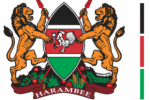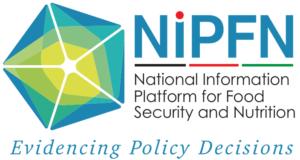- Version
- Download 38
- File Size 2.21 MB
- File Count 1
- Create Date October 5, 2023
- Last Updated October 13, 2023
Taita Taveta County Nutrition Action Plan 2019 - 2023
Executive Summary
According to the 2018 Global Nutrition Report, 150.8 million children under five years are stunted, 50.5 million are wasted and 38.3 million are overweight worldwide. In addition, 2.01 billion adults are overweight and obese. The burden of malnutrition has had great negative developmental, social economic and health impact globally. In Kenya, about one in every four children under five suffer from one form of malnutrition or another (KDHS 2014). It is common for someone to suffer from several types of malnutrition at the same time e.g. a child may be stunted and at the same time wasted and suffer multiple micronutrient deficiencies. On the other hand, a person may be overweight or obese and at the same time suffer from multiple micronutrient deficiencies like of iron iodine, zinc or folic acid. As manifested by stunting, wasting, underweight, micronutrient deficiencies as well as Diet-Related Non-Communicable Diseases (DRNCD), the burden of malnutrition in Taita Taveta County. Beyond poor diets and morbidity which are the immediate causes of malnutrition, there exists socio-cultural, political and economic factors. These include but not limited to household food insecurity; inadequate care of vulnerable household members across different gender and age cohorts and cultural example, there is a growing perception that traditional nutritious foods are inferior to processed, imported foods; poor health seeking behaviors and care practices among men and women across all ages and diversities; low community and male support in relieving women of overburdening maternal workload; inadequate and inequitable access to nutrition and health education, unequal access,use and control of benefits from productive assets disproportionately affecting women and girls including their discrimination in decision making on issues pertaining their nutrition and wellbeing, which must be addressed as part of effective and sustainable ways in addressing malnutrition.
The process of development of CNAP 2019–2023 was spearheaded by the County Government of Taita Taveta, through a multisectoral approach. A consultative engagement of various County departments in the development and anticipated adoption of the CNAP to their respective sectoral plans was key in ensuring a focus of both nutrition specific and nutrition sensitive interventions. Its worthy noting that a series of face-to- face and virtual meetings were held at county level during the entire development process. Further, the process brought together a broad range of actors that including County Departments, development partners, United Nations (UN) agencies, NGOs, and the civil society organizations (CSOs) involved in nutrition programmes in the county.
The CNAP is organized into five chapters: Chapter 1 highlights nutrition situation in the County and the key drivers of the nutrition situation. Chapter 2 introduces the Vision, Mission, Goal and rationale for the CNAP. Chapter 3 outlines the key result areas, Strategic objectives, activities, and their expected outcomes. Chapter 4 describes the monitoring and evaluation, accountability and learning framework and Chapter 5 budget estimates for implementation of the plan.





